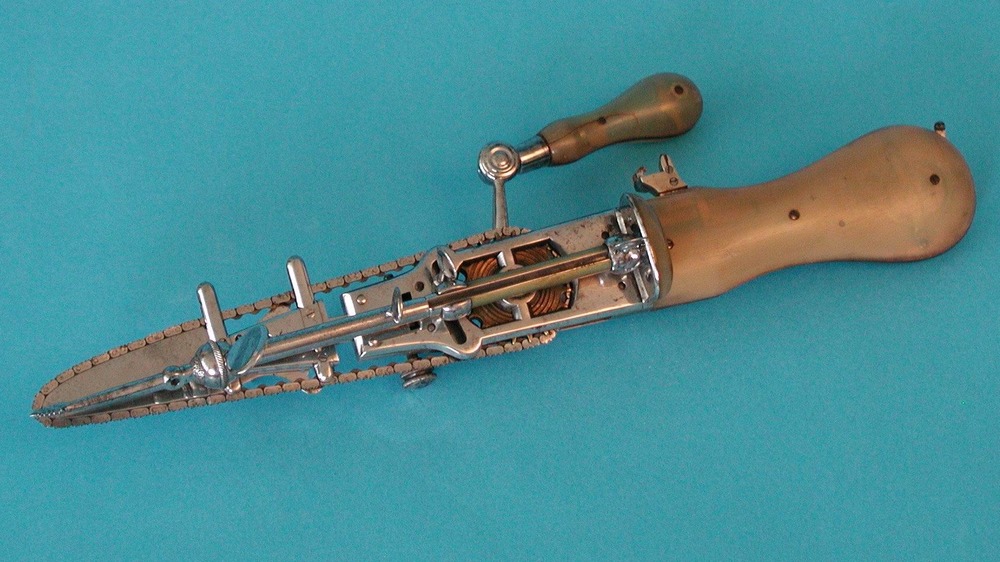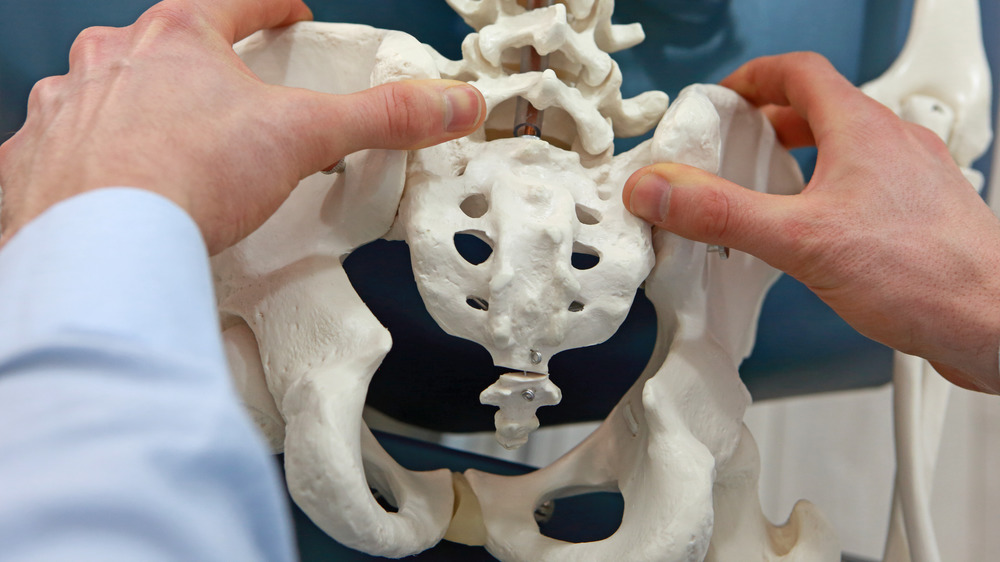The Disturbing Reason Chainsaws Were Invented
If we told you that the chainsaw was invented for the explicit purpose of events befitting a movie like The Texas Chainsaw Massacre, we, sorry to say, wouldn't be that far from the truth. As it turns out, Leatherface's misuse of the tool on human flesh, rather than wood, is actually closer to the original application of the device, says Popular Science. That's right: the chainsaw was first invented to be used on people, then some genius later on had the much better idea to use it on trees instead. The chainsaw was invented by a pair of surgeons in Scotland named James Jeffray and John Aitken, who weren't the sadistic mad scientist types you're imagining right now. Believe it or not, they made it in order to facilitate — get ready for this — childbirth. (We'll give you a minute to recover ... You good? Hang in there. This doesn't get any easier.)
Folks back in the 18th century didn't have all the modern drugs and surgical implements we have today. This was before anesthesia, C-sections, and Cosmopolitan listicles about 10 ways to make labor less painful. We're sure women from the 1700s would have wished that Jeffray and Aitken could have tried a few things on that list before going full psycho killer on their pelvises with their new invention. (You couldn't have tried hypnotherapy first?) So, you're probably wondering, how exactly does one use a chainsaw during childbirth?
TikTok can't look away from the reason the chainsaw was invented
When it was first invented, the chainsaw was originally used to perform a (thankfully outdated) procedure known as symphysiotomy. This was a terribly painful operation in which doctors cut the cartilage and bone connecting the pelvis in order to allow for babies too big to fit through the birth canal, or born breech (feet-first), to make their way into this world when they otherwise couldn't. And it wasn't much better before that pair of Scottish docs invented the chainsaw, which was then powered by a hand crank. Doctors before them used a sharp knife that just didn't get the job done in time, so their creation that seems rather gruesome to us (and 18th-century women, as well, we're sure) was actually considered a more precise and humane development in childbirth technology.
The very 21st-century denizens of the TikTok world, however, did not see it that way. Reaction videos went viral on the platform after one user shared the story of the chainsaw's frightful origin story on the popular social media platform. Reporting on the viral phenomenon, Hayley Soen of The Tab wrote dejectedly, "The world is a sick, sick place." Dunder Mifflin Memes, a Facebook group dedicated to memes based on the hit comedy The Office, posted a picture of Andy Bernard soaking his face in a laboratory eye wash station with the accompanying text: "Me after learning why chainsaws were invented."
The terrible history of symphysiotomy in the 20th century
For most of the world, the nightmare of symphysiotomy ended once medical science began to use anesthesia in the latter half of the 19th century. But as CNN reported in 2015, hundreds of women in Ireland were subjected to the heinous operation well into the 20th century. The outlet interviewed several women who received symphysiotomies during childbirth with only local anesthesia. They recounted the horrors of the procedure that was performed without their consent, as well as the lifetime of health consequences that resulted from it. While none spoke of a chainsaw being used to perform the procedure, their stories were haunting nonetheless. "He was obviously sawing me in half," said Rita McCann, who described the operation as "a life sentence" she received without having any say in the decision.
Marie O'Connor, chairwoman of an organization that works to bring justice to the approximately 300 women subjected to the treatment, called the surgery "an abuse of power" by the Catholic hospitals in which the operations were performed. She called it "a pre-emptive surgical strike against the practice of birth control" by Catholics who associated C-sections with birth control. Her work led the Irish government to dole out paltry payments she claimed were meant to "buy off survivors at the lowest possible cost," and some of the women decided to pursue legal action in search of justice. For there was truly no medical justification for performing the operation as late as 1984.


